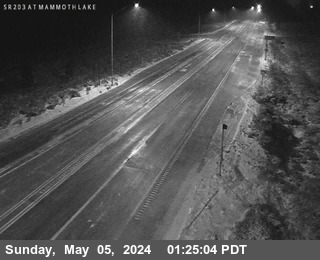Brought to you by Howard Sheckter
Archive for July, 2015
Upper Trof will exit the Eastern Sierra Today followed a little cooling……Continental Upper High will expand west by Mid Week bringing a warm up 1st…..Followed by a Chance of Thunderstorms Beginning Thursday into the Weekend……..
Monday July 27, 2015
A synoptic scale upper Trof will exit Western Nv today and lift NE into the Northern Rockies Tuesday. This has brought a very dry air mass to the Eastern Sierra. NW flow aloft will back to the west today then weaken Tuesday followed by rising heights and a warm up beginning Tuesday.
At the moment, the Continental High is over Arkansas near the Mississippi River in the South. It will retrograded west to the Four Corner States by Thursday and strengthen. The upper level flow begins backing from the SE along the CA/NV border by Wednesday Night. So the process of moistening will begin Thursday with Air-Mass modification Thursday into Saturday. High temperatures in Mammoth will climb into the low 80s by Wednesday and continue in the 80s through Thursday before they cool back into the 70s over the weekend.
Weekend Thunderstorms:
As we are aware, this summer has been a wet one. So naturally there is concern about rainfall over the upcoming weekend festivities. The Thunderstorm pattern that will develop prior to and through the weekend seems to be a typical Monsoon set up without any extra tropical storm moisture or dynamics like the last one. The storms will begin mainly high based with mostly lightning with little rain followed by more hybrid storms Friday transiting to wet by Saturday.
The intensity of any rainfall will be dependent upon the usual.
1. The amount of sunshine we get every morning and afternoon to aid in the convective process.
2. Any organized short wave, easterly wave or Vort Center that may come over the area to enhance vertical motion.
3. Also the timing of the short waves are important as if it one comes through at night, we could have nocturnal storm’s.
Is it possible that we may have heavy rain? ……Yes However, it is not possible to know at this distance in time where or when that may happen, as although there are short waves indicated by the extended models in the upcoming pattern, the location and timing is not certain.
Will update Wednesday or Thursday for a closer look….
Dr Howard and the Dweebs………………………:-)
Tom’s Corner
Tom Cylke is a retired Weather Service forecaster
and my Weather Mentor for over 20 years…
For the true weather Dweebs….
The following is an excellent example of the North America Monsoon;
Over the next few days a classic monsoon pattern will set up resulting in an outbreak of thundertorms over much of the intermountain west. The monsoon is by definition a wind pattern set up by the heating of continents(mainly elevated heat sources) in the summer characterized in North America by an upper high over the four corners area and a surface thermal trough extending from Arizona into western Nevada. When the four corners high begins to build strong subsidence creates an elevated inversion or cap which inhibits deep convection but does allow for strong surface heating and mixing up to the elevated capping inversion. the strong surface heating sets the stage for steeper lapse rates and mid level moistening under a more mixed adiabatic atmosphere. The first day or two of the monsoon pattern results in high based cumulus capped by subsidence inversion however PWs , CAPE and theta E values are increasing none the less under this pressure cooker environment. This is the air mass modification stage that is waiting for a trigger to bust the cap which can be an type of cooling aloft brought about by divergence from a short wave feature (vort max) or favorable divergent area of a jet max or deformation zone. By day three isolated high based thunderstorms will develop in areas of focused vertical motion brought about by low level convergence and upper divergence couplets along the surface thermal trough or mountain ranges often with very weak upper level features rotating around the periphery of the 4 corners high. The right rear entrance region of a jet max and a topographically force convergence zones over the central Sierra and Mountains of central Nevada are often the first to trigger the high based thunderstorms. By day four PWs have doubled due to the previous days convection allowing widely scattered to scattered thunderstorms to develop triggering earlier in the afternoon and with lowering cloud bases and thus a higher potential for heavier rain. This pattern repeats with wetter and more widespread thunderstorm activity until a drying and stablizing event or pattern sets up such as the right front exit region of a pacific northwest jet bring in subsidence and drying aloft along with a downslope southwest flow. The expansion of the 4 corner high will bring back the monsoon flow pattern as the Pacific northwest trough weaked and moves eastward. Most of the moisture and instablilty generated in the monsoon pattern develops via the air mass modification(vertical motion) process with very little input from horizonal advection except in cases of outlow boundaries from MCCs and tropical storms which tend to be limited by topography and entrainment of drier and more stable environmental air. Atmospheric moisture is more a result of convection(vertical motion) not a cause of it therefore a lagging indicator. Moisture does feedback into the convective process in subsequent days resulting in lowering cloud bases, earlier trigger times a greater potential for heavy rain. The primary drivers for deep convection (thunderstorms) are adequate CAPE and a convergence/divergence couplet to trigger that CAPE.
Tom




